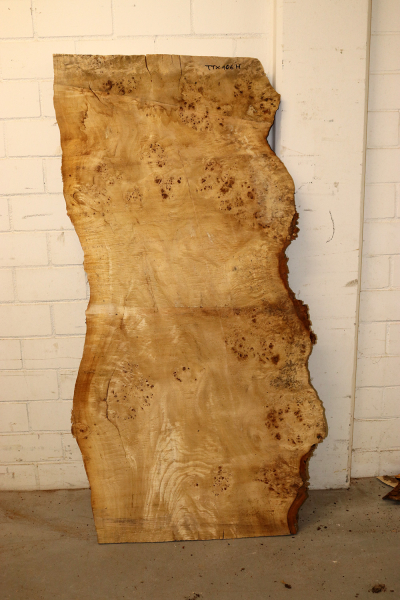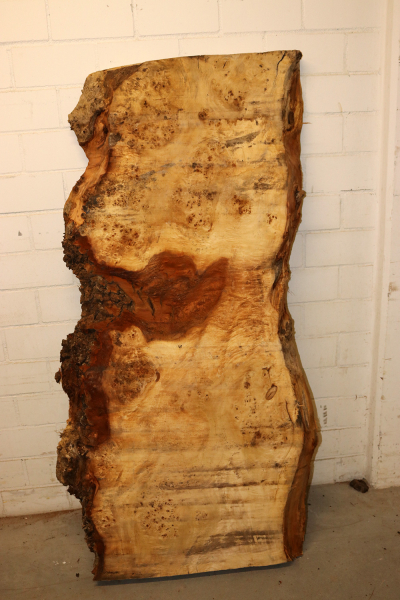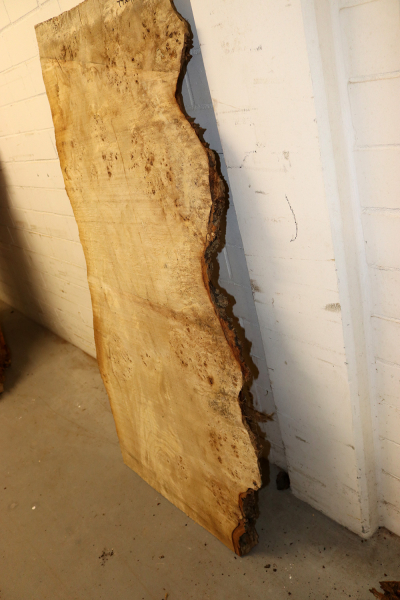 The black poplar (Populus nigra) is a species of cottonwood poplar that grows in many parts of Central Europe. It prefers to live near riverbanks. In addition to a good water supply, it needs to be well-aerated gravel and sandy soil. Poplars usually live to about 150 years, occasionally even up to 300 years. The black poplar can reach heights of 80 to 100 feet.
The black poplar (Populus nigra) is a species of cottonwood poplar that grows in many parts of Central Europe. It prefers to live near riverbanks. In addition to a good water supply, it needs to be well-aerated gravel and sandy soil. Poplars usually live to about 150 years, occasionally even up to 300 years. The black poplar can reach heights of 80 to 100 feet.
The wood is soft, lightweight, and with long fibers. It can be worked with very sharp tools, making it very popular as carving wood. Larger pieces are mainly used as plywood. The burl wood from an enormous root ball can have brown eyes. It is gorgeous when polished and can have a stunning 3-D effect.
Dimensions: approx. 1570 x 930 (widest side) 700 narrowest side - x 65 mm
You will get the shown piece!
Shipping can only be done by a carrier, the price varies depending on the destination. (When processing the order, a flat rate of € 150 is charged for shipping by a shipping company, we will send you the exact price, which is probably a little lower, after the purchase or in advance)
Of course you can also pickup the table top from us.
This table top was kiln dried in a drying chamber.
The wood moisture is 10% and can be processed immediately!
On request, we are happy to take over the work up to the finished table top. Please just contact us.
Further information on our range of table top processing can be found here.
Finely grained wood may contain imperfections such as open knots, bark inclusions, or cracks that are typical of the species. These flaws come from the way the tree has grown and are completely natural. They can usually be filled with low-viscosity cyanoacrylate (super glue) and wood dust.
Mandatory information according to the EU Product Safety Regulation (GPSR):
Manufacturer / person responsible:
Company FeinesHolz
Ulf Henke
Plauener Str. 163 / K
13053 Berlin
Berlin, Germany
E-Mail:
gpsr(at)feinesholz.de




